In a Nutshell:
- Many conventional makeup brands contain potentially toxic chemicals such as butylated compounds, phthalates, parabens, and even heavy metals like lead.
- But there are lots of great clean lip product brands on the market that provide a wide range of colors and products (lipstick, gloss, balm, etc.)
- Some of the best brands for natural and non-toxic lipstick include:
- See below for even more recommendations!
In this article, I’m going to talk about all things non-toxic lipsticks and lip glosses: what are the chemicals to avoid, and which brands are safe. If you’re looking for balms, we’ve got another article for you!
Unfortunately, the cosmetics industry lacks stringent regulation, so not everything you find on shelves is toxin-free.
If you’re looking to fill your makeup bag with non-toxic, organic, and the most natural lipsticks and lip glosses in 2024 — you’re in the right place.
Reducing the number of toxicants in your makeup bag can be overwhelming. I recommend taking it one step at a time, replacing your favorite cosmetic products with non-toxic alternatives as you run out.
Table of Contents: Non-Toxic Lipstick
- Do I Really Need A Non-Toxic Lipstick?
- The Best 10 Brands for Non-Toxic Lipstick & Lip Gloss for Healthy, Luscious Lips
- 1. 100% Pure
- 2. Beautycounter
- 3. Honest
- 4. W3LL People
- 5. Toups & Co.
- 6. Juice Beauty
- 7. INIKA Organic
- 8. RMS Beauty
- 9. Mineral Fusion
- 10. Fat and the Moon
- Non-Toxic Kid-Friendly Lipstick & Lip Gloss Brands
- What Makes A Lipstick Toxic?
This post contains affiliate links, which means we may earn a small commission if you choose to make a purchase. We only make honest recommendations. Featured image credit: INIKA Organic
Do I Really Need A Non-Toxic Lipstick?
You’ll have to be the final decision maker on that, but for a product that sits on your lips all day, I want to make sure you have all the info when making that decision.
I’m covering some of the most common toxic ingredients found in conventional lipstick brands below (just scroll to the bottom!).
You’re not likely to get cancer or suffer reduced fertility from putting on conventional lipstick once or twice.
But the problem with lipstick toxicity (along with pretty much any other product) comes from your overall, long-term exposure from repeated use. With lipstick, you’re not only absorbing it through your skin as you do with other cosmetics, but you’re likely ingesting a lot of it too as you lick your lips, eat, drink, etc. If you’re putting on lipstick multiple times a day, each day, every week… that can all add up!
Add this to all of the other toxins we’re exposed to on a day-to-day basis—from other cleaning and personal care products to contaminants in our air and water.
We don’t have control over many of these exposures, which is why I encourage you to swap out the things you do have control over… cosmetics being a powerful one!
The Best 10 Brands for Non-Toxic Lipstick & Lip Gloss for Healthy, Luscious Lips
I’ve picked out some of the best chemical-free lipstick brands that are non-toxic and lead-free. (Plus, I’ve included some lipstick brands that are safe for kids below as well!).
Not only that, but they come in a wide variety of options so you can find your preferred colors and textures.
1. 100% Pure

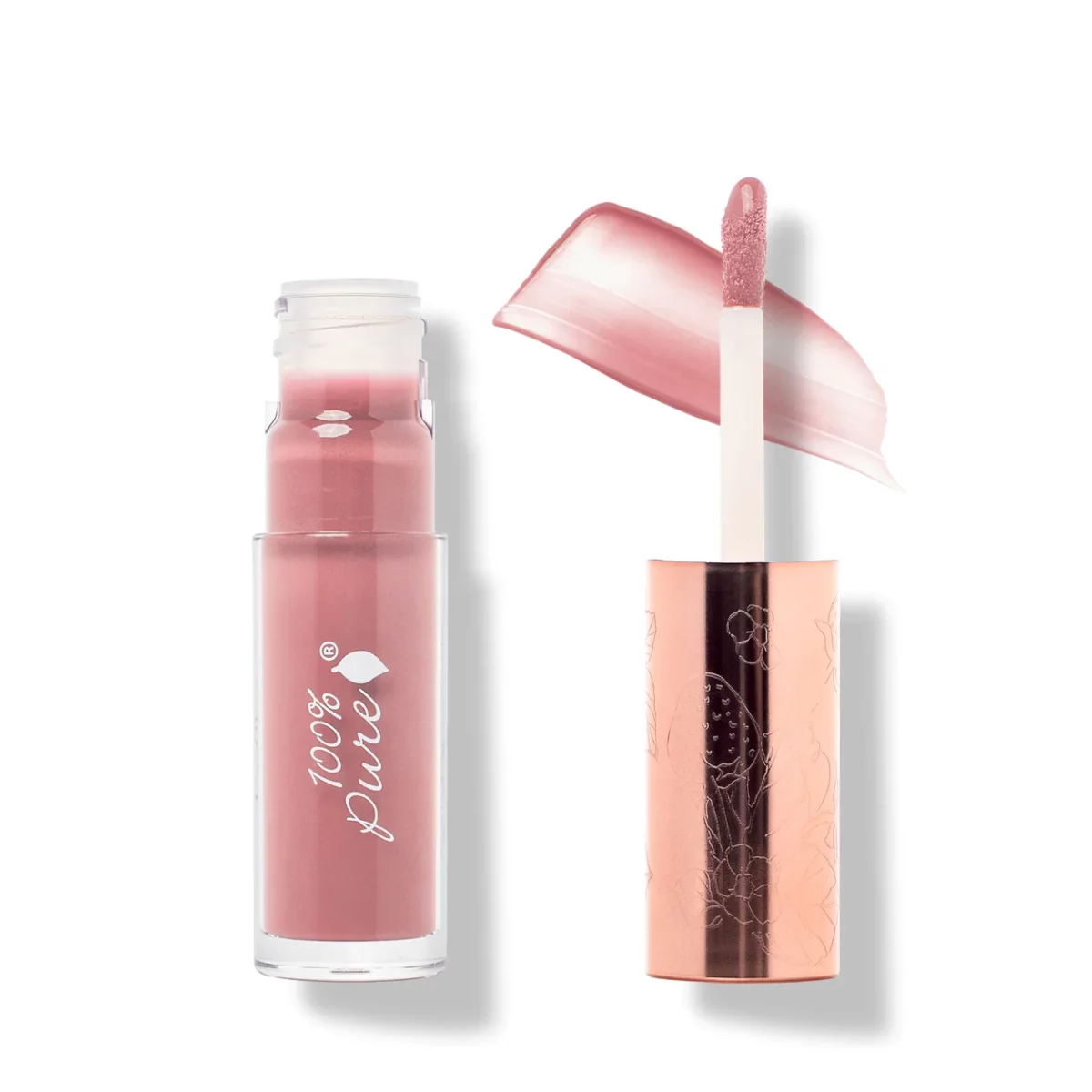
Carries: Lipstick, gloss, lip tint, stain, and balm
Whether you’re looking for a gloss or a matte look, 100% Pure carries a selection of non-toxic lipsticks for every skin tone. Instead of synthetic dyes, this vegan-friendly brand uses fruit extracts like cherry, pomegranate, blueberry, and more to give your lips a pop of color. Many (though not all) of their ingredients are organic.
2. Beautycounter
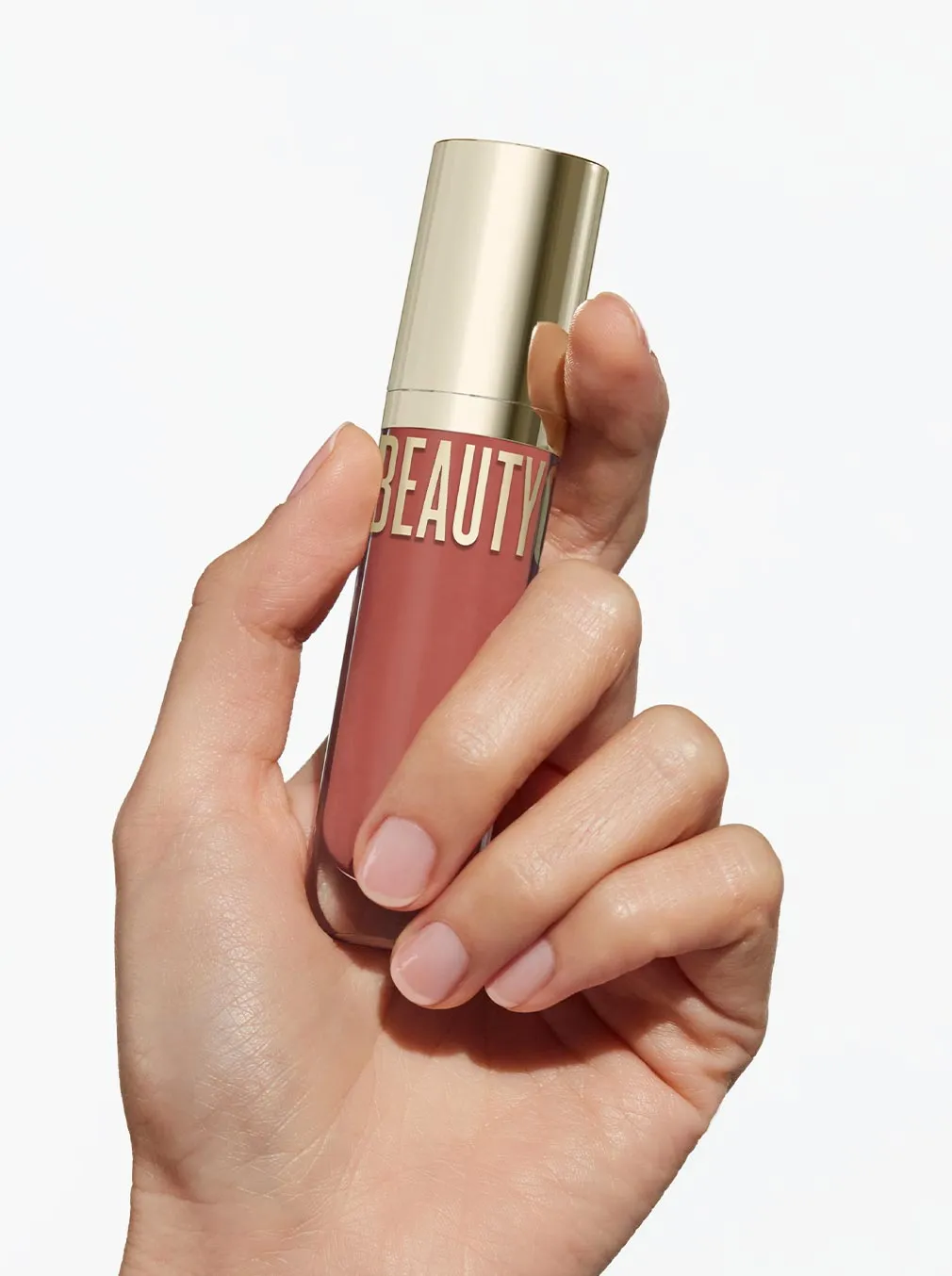

Carries: Lipstick, gloss, conditioner, and “Jellies”
Beautycounter is one of my favorite brands when it comes to safe, high-quality personal care and cosmetics. They can compete with the more “mainstream” brands when it comes to performance.
Their lipsticks and glosses come in a wide variety of colors to complement a variety of skin tones. Plus, they smell and taste really yummy, too!
3. Honest

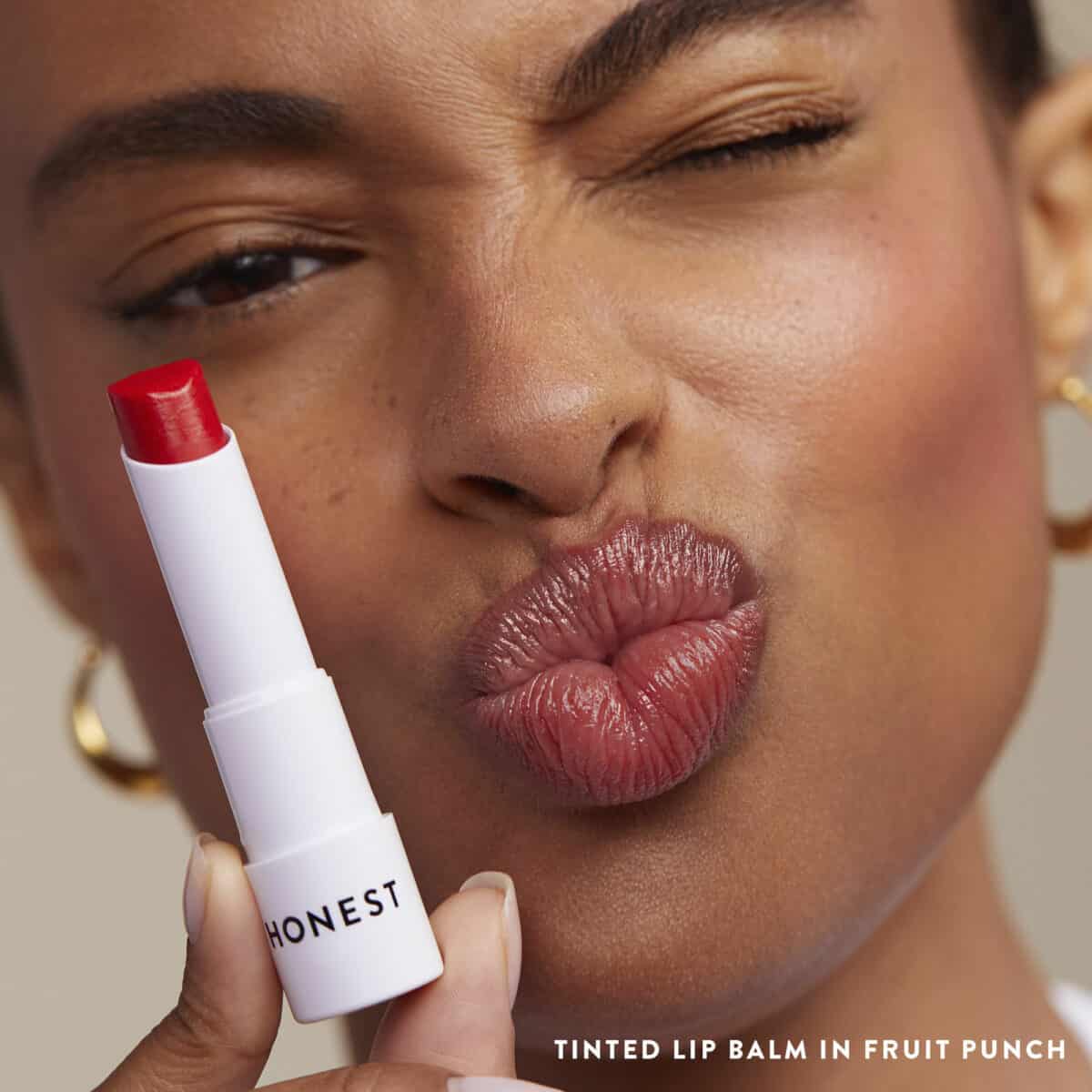
Carries: Tinted lip balm, liquid lip gloss, matte lip crayons, and more
One of the reasons why I love Honest is because they’re one of the most accessible non-toxic brands. Their prices are reasonable, they have a lot of products to choose from to meet a variety of preferences, and you can often find their products in big box stores.
Honest carries a wide variety of Environmental Working Group (EWG) Verified lip colors, so you’re almost guaranteed to find something you like. These products are infused with nourishing ingredients like jojoba oil and shea butter, and they’re all dermatologist-tested, hypoallergenic, and cruelty-free.
For a deeper dive into the Honest brand, check out this article.
4. W3LL People


Carries: Lipstick, lip gloss, lip oil, lip balm
W3LL People was founded by “an elite makeup artist, cosmetic dermatologist, and a tree-hugging entrepreneur.” Their lipsticks and lip glosses come in a variety of pinks and reds and contain ingredients like organic cupuacu butter, jojoba oil, and aloe.
Not all of their products are EWG Verified, but their lipsticks are!
5. Toups & Co.


Carries: Lipstick, lip gloss, lip balm (tinted and non-tinted)
Toups & Co. is a small, family-owned business that’s based in Alabama (where their organic makeup is handcrafted!). They source ingredients from small, local, and organic farms as much as possible.
Their safe lipsticks come in a range of reds and pinks and are infused with things like nourishing avocado oil, vitamin E, and jojoba oil. Almost all of their ingredients are natural and/or certified organic. I like how minimalistic their ingredient list is, too.
6. Juice Beauty


Carries: Liquid lip color, lip crayons, balms
Juice Beauty’s vegan and cruelty-free liquid lip color goes on like a gloss, but it’s highly-pigmented like a lipstick.
Or, if you want something with more of a matte look, you can go with their Lip Crayons.
Both options come in a range of pinks and reds. They call their colors “Phyto-Pigments” because they’re plant-derived (instead of artificial).
7. INIKA Organic
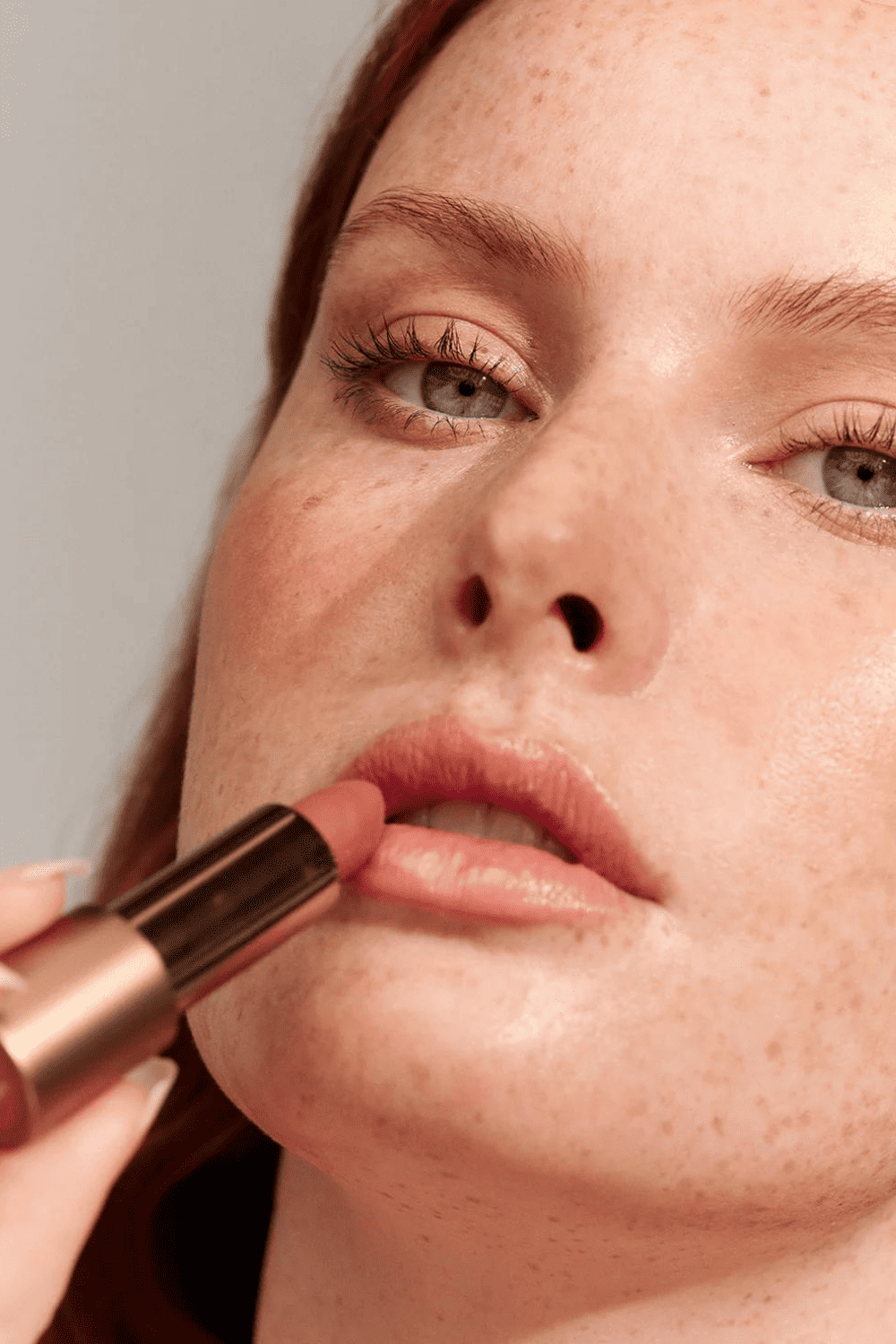

Carries: Lipstick, lip & cheek cream, lip balm, lip gloss, lip crayon, lip serum
As you can see from the list right above, INIKA has a lot of options for organic lipstick! Most of their products come with a handful of certifications, including OFC Certified Organic Australia as well as PETA Vegan & Cruelty-Free. Most of their options are 100% natural and almost entirely organic.
Their healthy lipsticks come in a range of beautiful colors (including non-tinted).
8. RMS Beauty

Carries: Lipstick, lip liner, balm, and shine
RMS Beauty was started by a celebrity makeup artist who was concerned about daily exposure to toxic cosmetic products. Their lipsticks come in a wide variety of pinks, reds, and neutrals, and they also have several multi-use products that can be used on your cheeks, too.
9. Mineral Fusion


Carries: Lipstick, tint, pencil, gloss, crayon, butter
Mineral Fusion’s lipsticks are vegan, gluten-free, and made with natural ingredients (many of which are certified organic) like cocoa seed, coconut, and avocado oil. These natural lipsticks come highly-rated in a wide variety of colors.
10. Fat and the Moon


Carries: Lip balm, salve, and stain
Fat and the Moon is a favorite skincare brand in the zero-waste world. Their plastic-free tinted balms and stains can be dual-purpose for both your lips and cheeks. They’re made from organic and cosmetic grade ingredients like sunflower oil, beeswax, and mineral pigments, with added Vitamin E. Plus, it’s all handcrafted and cruelty-free.
Non-Toxic Kid-Friendly Lipstick & Lip Gloss Brands
It’s tough to find non-toxic makeup that’s specifically made for kids.
That being said, here are a couple of the best brands for non-toxic lip gloss and lip balm for kids:
Klee Naturals


These super cute red, pink, and clear glittery lip glosses are made from almost completely natural ingredients and are free from toxins like parabens, phthalates, colors, dyes, and gluten. Klee Naturals has a lot of really cute makeup kits and gift sets, too.
Shop Klee Naturals at:
Prim and Pure

Carries: Lip balms, lip glosses
Prim and Pure has some really cute safe makeup products for kids, too. They’re made with plant-based ingredients like organic castor oil, shea butter, and essential oils for scent.
What Makes A Lipstick Toxic?
So, what are the chemicals in lipstick to avoid? Here are some of the major toxicants to be wary of, and why:
Butylated Compounds
Butylated hydroxytoluene (BHT) and its relative, butylated hydroxyanisole (BHA), are synthetic antioxidants that are also commonly used in lipstick to extend shelf life.
BHA has been linked to reproductive and developmental toxicity, along with cancer.
Although more research still needs to be done on BHT specifically, it should also be noted that it’s a toluene-based ingredient. Toluene is a well-established toxin that can cause neurological damage and more.
Colors & Dyes
Half the reason most people even use lipstick is for the color. But what is used to make those bright reds and fresh pinks, and are they safe?
Colorants can be a bit confusing because they can come in several different forms:
- Earth-derived
- Plant-derived
- And synthetic/artificial
There are pros and cons to these different types of colorants, and this is an instance where “natural” does not always equal “better” or “safer.”
Earth-Derived Colors & Dyes
Earth-derived pigments come from sources like mica, iron oxide, titanium dioxide, zinc oxide, coal tar, and petroleum. You may see these ingredients listed with the word “lake,” which is the term used for pigments or dyes that are precipitated with metal salts.
This is where lead and heavy metal contamination often come from. Ideally, you want to purchase from brands that are stringent in choosing their suppliers and even conduct independent testing of their own to test for contamination of these metals.
You’ll also want to avoid carbon black, which is usually used for darker shades of lipstick and lip liner (as well as things like mascara and eyeliner). Carbon black is produced by combustion of carbon-based products (like coal tar), and is linked to increased risk of cancer and other negative health outcomes.
On an ingredient label, carbon black might also be listed as “D&C Black No. 2,” “acetylene black,” or other things.
Plant-Derived Colors & Dyes
Plant-derived pigments include colors that come from fruits and flowers. This sounds like a much safer option (and it likely is most of the time!), but you’ll want to buy from reputable brands who are sourcing their ingredients responsibly.
Another thing to consider when it comes to plant-derived ingredients is how much processing has gone into converting the ingredient from a raw plant to a dye that can be used in a cosmetic product. Sometimes, the process can be quite intense, requiring so many different chemicals that it can make the line between “natural” and “synthetic” a bit blurry.
And of course, organic is always best, since conventional plant-derived products can contain traces of toxic pesticides.
Synthetic & Artificial Colors & Dyes
Lastly, there are synthetic and artificial colorants. Although it may typically be assumed that synthetic and/or artificial ingredients should be avoided, these are actually the most strictly regulated by the FDA when it comes to cosmetics. The FDA actually has pretty specific rules about which specific colorants can be used in what kind of cosmetics, and how much.
That said, some of the synthetic colorants that are still used in cosmetics are safer than others. You’ve probably heard about the infamous “red dye 40”… Even though we may think of it more in terms of food and drink, it’s used in cosmetics as well!
If you’re concerned about colorants, dyes, and lakes, don’t hesitate to reach out to your favorite brands and ask more questions about how their colors are sourced and what sort of independent testing is done!
Related:
Fragrance
“Fragrance” (also listed as “parfum”) is such a ubiquitous ingredient that it can be found in virtually all cosmetic, personal care, and cleaning products these days.
The problem with “fragrance” is that it’s not an actual ingredient; it’s an umbrella term that can include over 3,500 different chemicals. Some of these chemicals are perfectly safe, while others can cause cancer, infertility, and more (like phthalates, for example).
Under U.S. law, companies can include any of these ingredients in their formulations without actually listing them on the label. This obviously makes it very difficult (sometimes even impossible) to know exactly what’s in your lipstick.
Heavy Metals (Including Lead)
Although regulations have been restricting and prohibiting lead in many other products like paint and baby toys, the amount of lead in lipstick wasn’t actually tested until 2007.
That year, the Campaign for Safe Cosmetics tested 33 popular lipstick brands and found that 61 percent of them contained lead, with levels ranging up to 0.65 parts per million.
Then, after receiving significant pressure from consumers and lawmakers, the FDA finally conducted its own investigation two years later. This study found ranges of lead from 0.09 to 3.06 ppm—even higher than in the Campaign for Safe Cosmetics study!
The big problem with lead is that there is really no safe amount; even exposure to small doses can have negative effects, especially for children. Some of these negative consequences include neurotoxicity (learning, language, and behavioral problems), reduced fertility, delayed puberty onset, and other hormonal issues.
Which Lipstick Brands Contain Lead?
Brands that have tested positive for lead include:
- CoverGirl
- Revlon
- The Body Shop
- L’Oreal
- Maybelline
- Clinique
- Burt’s Bees
- Peacekeeper
- Dior
- M.A.C.
- Avon
Notice that this list includes a couple of more “natural” brands, like Body Shop and Burt’s Bees! (Although, it is worth noting that The Body Shop was owned by L’Oreal when these tests were conducted and it has since been sold to Natura. This may or may not have impacted the formulation and production of its products.)
Other heavy metals like chromium, cadmium, aluminum, and manganese.
Unfortunately, lead isn’t the extent of the metal problem when it comes to lipstick and lip gloss. A 2013 study out of the University of California found eight other heavy metals in lip products, including chromium, cadmium, aluminum, and manganese. All of these metals come with their own potential consequences to one’s long-term health.
Parabens
Parabens are a common category of toxins that you’ll find in a lot of your cosmetics and personal care products.
These are preservatives that help prevent the growth of things like mold and other microbes. Considering that mold can be toxic, adding preservatives to personal care products and cosmetics is a good thing!
But the problem is that parabens are linked to a host of serious health concerns, from cancer to infertility. They are endocrine disruptors, which means they can disrupt your body’s many important hormonal systems, causing negative downstream effects. (Plus, there are much safer preservatives that can be used instead.)
PFAS
You probably know about these toxic “forever chemicals” by now. It’s the Teflon that makes your cookware non-stick, or the GoreTex that makes the rain slide off your hiking boots.
PFAS can be added to cosmetics intentionally or unintentionally.
When added intentionally, it’s used to make cosmetics waterproof or “long-lasting.” Avoiding intentionally-added PFAS is relatively easy. Avoid ingredients with “fluoro” in the name and shop from brands that have strict policies about using PFAS-free makeup formulations.
Non-intentionally added PFAS are another story. They seem to be everywhere; the more products are tested, the more we find contamination. It’s theorized that they get there somewhere in the manufacturing process—from non-stick molds, lubricated machinery, conveyor belts, etc.
As a consumer, there’s not too much you can do about this at this time. Governmental regulation on a larger scale is really the only thing that’s going to fix this problem. The good news about this, however, is that the amount of PFAS in contaminated products is going to be much lower than in the products where PFAS were added on purpose.
Retinyl Palmitate
This is a concerning ingredient that is found in a lot of lip products. It is composed of palmitic acid and retinol (Vitamin A) and is used as a “skin-conditioning agent.”
According to the FDA, along with Norwegian and German health agencies, when it’s applied to the skin in the presence of sunlight, retinyl palmitate can potentially speed the development of skin tumors and lesions. This is why it’s important to avoid wearing retinyl palmitate on areas that will be exposed to the sun (like your lips!).
Final Swipe on Non-Toxic, Natural, & Lead-Free Lip Color
I hope this guide has helped you find the best “chemical-free” lipstick! Technically, everything has chemicals, but you hold the power to ditch the brands that haven’t ditched the lead, parabens, and other toxicants.
I hope this makes your decision to swap out your lipsticks and glosses for non-toxic, natural and vibrant alternatives that much easier. You don’t have to sacrifice your health to have beautiful, healthy made-up lips!


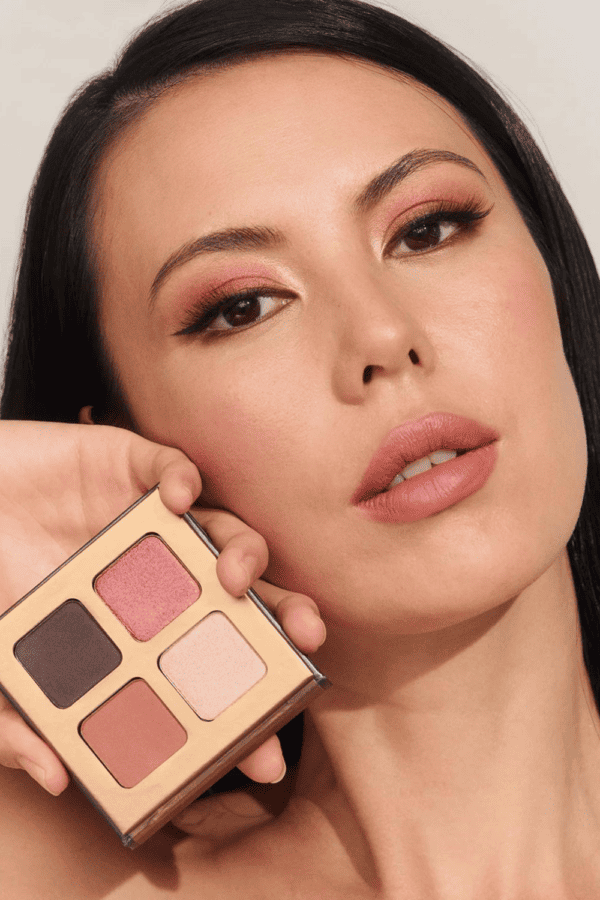
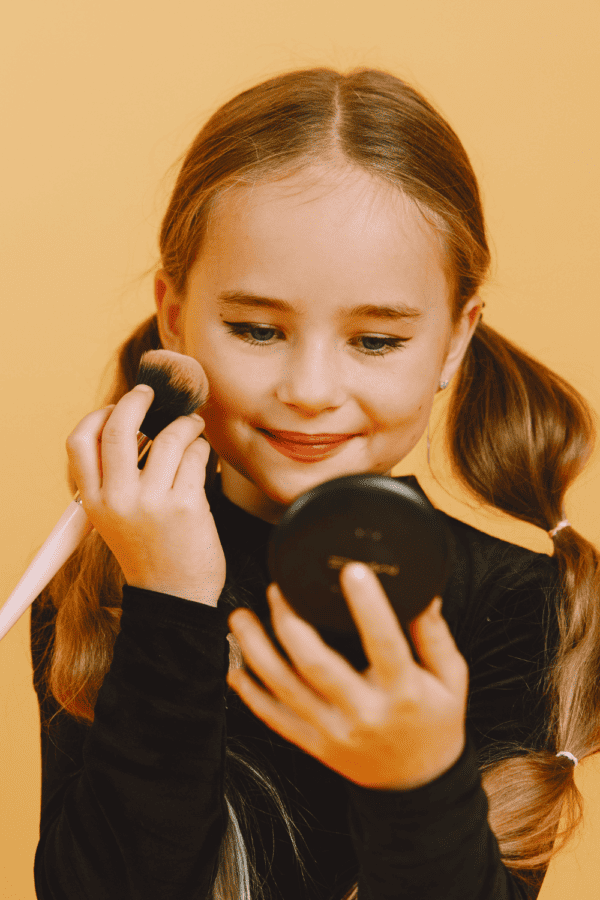

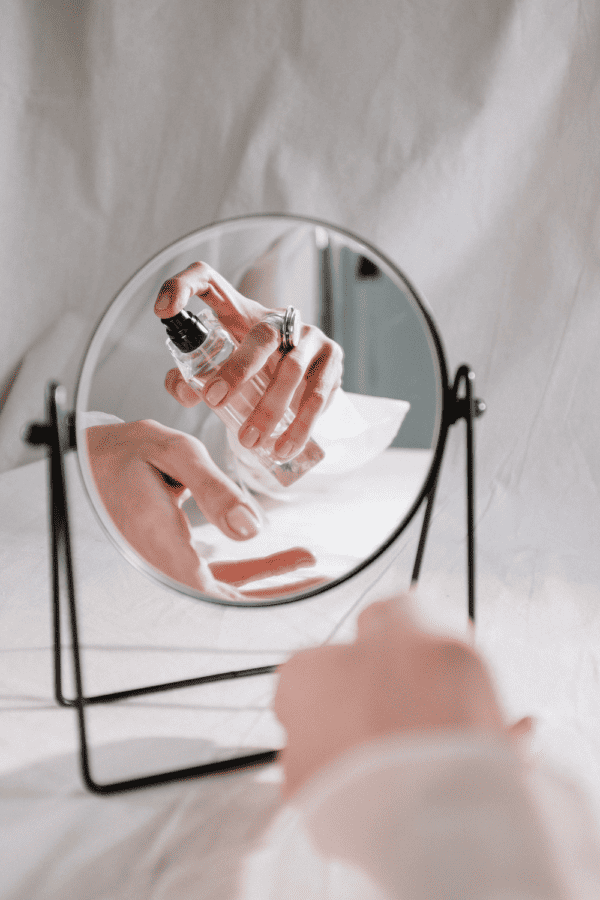
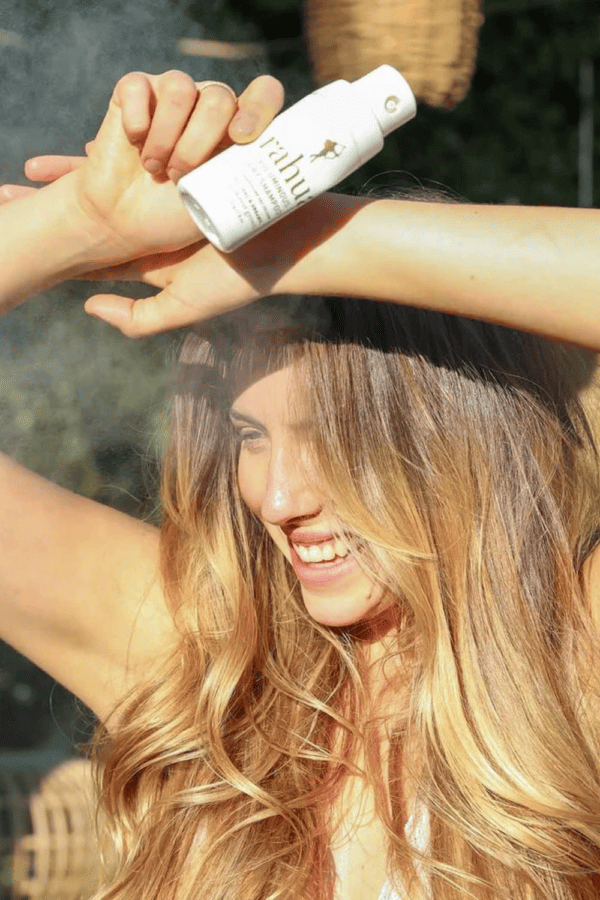
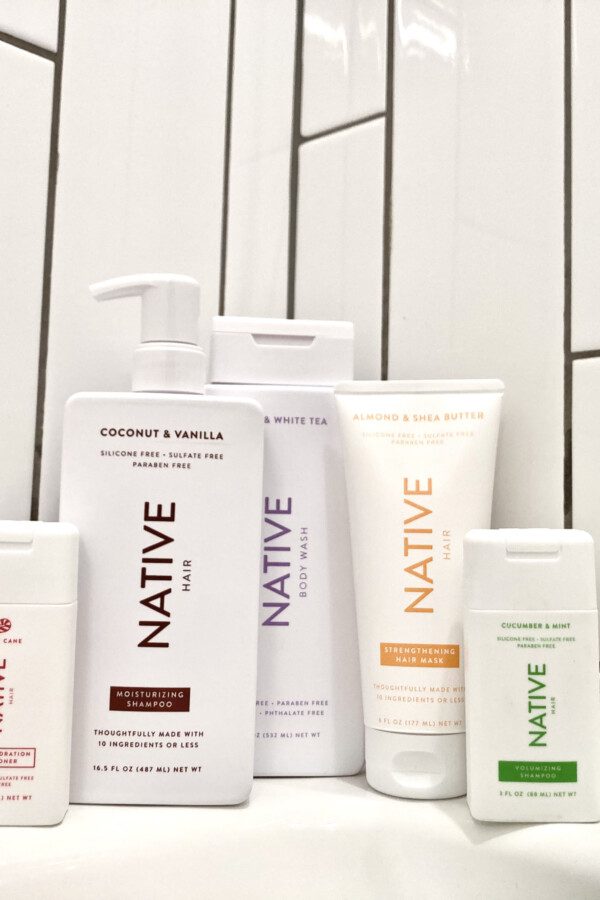
Hi I have just read your information re none toxic lipstick Every time I wear lipstick my gums hurt. Which out of all your recommendations of none toxic lipstick would be my best choice to try. Least harmful. Thankyou Mary. I’m 70. Go to dentist regularly. I like a matte lipstick
Hi,
I don’t see Mineral fusion lipstick on EWG website.
Is it really EWG verified?
Hi Khyati, thanks for bringing that to our attention! You’re right – it looks like the Mineral Fusion lipsticks are no longer EWG Verified. We’ve edited the article accordingly (and also plan to do a more thorough update of this whole article in the near future as well!)
What about young living?
Hmm… I can’t find YL’s lipstick on their website… Are they still making it?